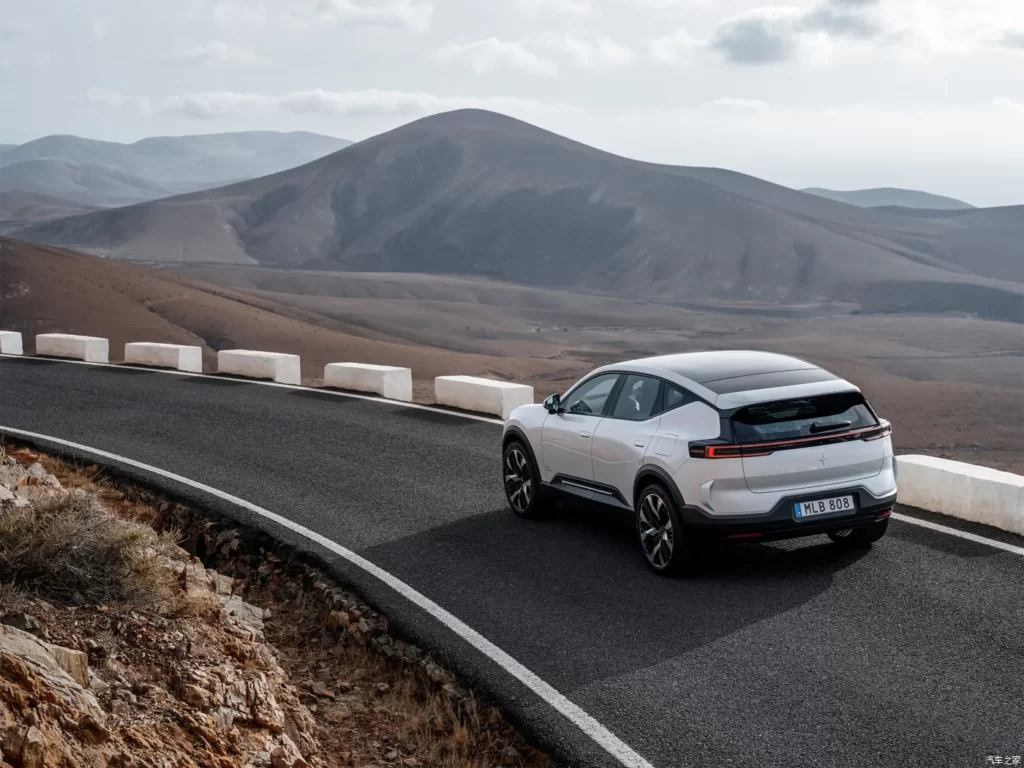89 900 $
89 900 $







Polestar 3 is a very important model for the young Swedish brand, which dreams to sell 290,000 cars per year worldwide by the end of 2025 (only 29,000 cars were sold in 2021 and 30,400 in the first three quarters of 2022). Polestar 3, unlike the two previous models – the Polestar 1 hybrid coupe and the Polestar 1 compact electric cross-liftback – has a unique, completely different design from Volvo’s models. The car’s aerodynamics (cf 0.29) and tailfins typical of Ferrari supercars are accentuated, including an integrated hood anti-wing, rear bumper side spoilers and a developed tailgate upper spoiler. The body and chassis are made of steel.

Battery type – lithium
Type of fuel – electric
Battery capacity, kWh – 111
Acceleration to 100 km/h, sec – 4.7
Maximum speed, km/h – 205
9-inch driver’s display
LCD screen
There is no official information about the platform, but foreign media argue that it is a Geely-developed modular “bogie” SEA1, rather than the Swedish SPA2, as previously reported (recall that Polestar and Volvo belong to the Chinese holding Geely). Curb weight is 2584-2670 kg, depending on the modification. Permissible towed trailer weight is 2200 kg. Already in the base Polestar 3 is equipped with a suspension with dual-chamber air bags as elastic elements and adaptive shock absorbers ZF, front suspension is on the double wishbones, rear – multilever. Front ventilated disc brakes Brembo have a diameter of 400 mm (four-piston calipers), rear – 390 mm (single-piston calipers).
Length, mm – 4607
Width, mm – 1859
Height, mm – 1478
Wheelbase: 2985 mm
Front wheel: 1673 mm
Rear wheel spacing: 1655 mm
Quick charge capacity (kW): 250
Number of doors and seats: 5 / 5
All wheel drive
The power train is twin-engine (one on each axle), with a maximum combined output of 360 kW (489 hp) and 840 Nm. Acceleration from 0 to 100 km/h takes 5 seconds, the maximum speed is limited at 205 km/h. There is torque vectoring on the rear axle – the power to the right and left wheels is supplied by two clutches independent from each other. When full power is not required, the rear electric motor can be switched off and the Polestar 3 becomes front-wheel drive.
Performance Pack is available as an option, which raises the power plant to 380 kW (517 hp) and 910 Nm, the acceleration time to “hundred” is reduced to 4.7 seconds. The 400-volt lithium-ion battery with a capacity of 111 kWh is equipped with a liquid cooling system with a heat pump and a full charge is enough for 610 km of run time under the WLTP cycle or 482 km under the American EPA cycle. Note that the difference in range between WLTP and EPA in this case is very large, buyers are better to wait for the exact data after certification. The battery consists of 204 prismatic cells packed into 17 modules and a common aluminum housing. The maximum charging capacity is 250 kW.
Each Polestar 3 will be equipped with advanced electronic driver assistants, receiving information through five radars, five external cameras and twelve ultrasonic sonars. A Pilot Pack with autopilot will be available as an option (its SAE classification level is not specified), with the Nvidia control unit, Luminar lidar, three cameras, four ultrasonic sonars and wipers for the front and rear cameras being added to the design.
There is a 14.5-inch central multimedia touchscreen running the updated “over the air” Android Automotive OS operating system. The top-of-the-line Bowers & Wilkins audio system distributes sound to 25 loudspeakers. The driver is monitored by two separate interior cameras: in case the driver loses consciousness, the car itself will make a safe stop.
Polestar 3 has a minimalist Scandinavian style interior finished in environmentally friendly materials. It has wide seats with spa functions, LCD display, panoramic sunroof and many comfort gadgets.
